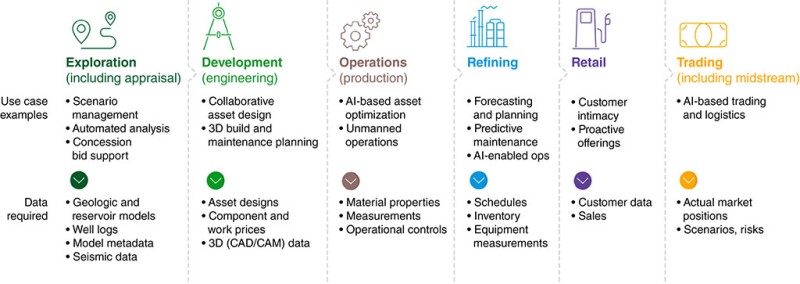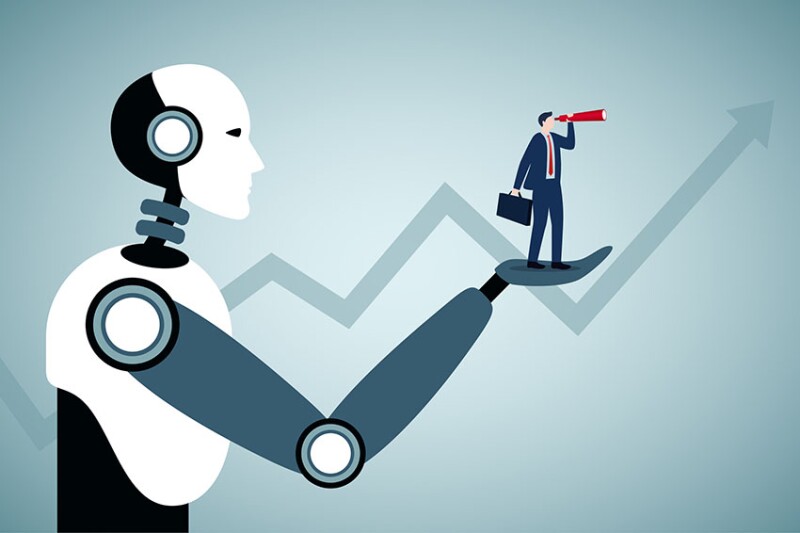Every decade or so, we see technological disruptions that transform how we live and work. In the 1980s, it was the personal computer revolution. The 1990s saw the rise of the internet and in the following decade we combined it with mobility. By the 2010s we were talking about cloud computing and big data.
That brings us to our current decade which is being shaped by the rapid, almost dizzying, advancements in artificial intelligence (AI) technology, particularly with large language models (LLMs) and natural language processing. Each of these advancements has made people more efficient in how they work across industries.
Generative AI, the latest frontier in the field of AI, includes AI algorithms capable of generating content like text, audio, image, video, and code. LLMs are a subset of generative AI that excel at comprehending text and mimic human-like natural language. This means that you can ask questions and reason with your computer in the same way you would with a coworker.
The first glimpse of this possibility came in November 2022 with the launch of OpenAI’s ChatGPT 3.5. The arrival of such transformative technologies is projected to boost the value and productivity of various industries by an estimated $2.6 to $4.4 trillion annually (McKinsey 2023).
The oil and gas industry is of course considered one of the most well-positioned to leverage generative AI to help in areas such as seismic interpretation or to drive new operational efficiencies (McKinsey 2024).
Fig. 1 is a snapshot of AI use cases across the value chain. The magnitude of data in oil and gas companies is massive, be it upstream, midstream, downstream, chemicals, or services sector. This list is far from exhaustive but illustrates the degree to which corporate and operational data can now be used to guide strategic decision making.

However, it needs to be emphasized that people remain the key for companies to realize the true value of AI. While some are concerned about job displacement by AI, there is also a growing expectation to use AI as part of one's job. In this article, I offer five reasons why I see AI as a tool to help people—especially engineers and other petrotechnicals—work faster, safer, and better.
1. Bridging the Knowledge Gap
The oil and gas industry is going through a retirement exodus. As experienced professionals leave, there is concern that knowledge of best practices and the instincts that people hold only in their minds are being lost. Moreover, hiring younger professionals is challenging, and those who are hired obviously cannot replace a retiring veteran with decades’ worth of experience. The result is that fewer people, with less experience, are now expected to handle the same or even greater workloads than in the past.
Due to the industry’s emphasis on safety and regulatory compliance, documenting and reporting various processes and activities is standard practice. But these documents tend to sit in unintelligent online siloes or sometimes even on dusty shelves. With AI tools, this information can be made easily accessible to new employees for training and significantly accelerate their climb up the learning curve.
2. Making Better Decisions
Each domain within the industry possesses extensive specialized knowledge, including operating procedures, manuals, safety standards, and operating logs, spanning decades. While essential for making big operational decisions, these documents are dense—often hundreds of pages long. When problem solving or making decisions, it is humanly impossible to go through and retain such massive datasets. This means that organizations are making suboptimal decisions or have missed opportunities. To put this in context, here are a few examples of possible missed opportunities.
- Improper site selection: Choosing drilling sites without adequate geological surveys can lead to unproductive wells or drilling in geologically unstable areas, increasing the risk of accidents and financial losses.
- Suboptimal asset divestment decisions: With mergers and acquisitions common in the industry, organizations must make informed decisions based on historical data about which assets they should invest in and divest from. Any missed documentation of a well’s production history can lead to significant financial misjudgments and operational inefficiencies, ultimately affecting the overall valuation and strategic decisions of the company.
- Underestimating environmental impact: Insufficient knowledge about environmental impacts can lead to decisions that cause significant ecological harm, resulting in long-term environmental damage and potential regulatory fines.
- Noncompliance with regulations: Lack of awareness or understanding of industry regulations and standards, even if it is a tiny detail in lengthy documents, can result in noncompliance, leading to legal penalties, operational shutdowns, and damage to the company's reputation.
AI, however, can be your superintelligent coworker that knows and retains all the required information, while allowing you to ask questions in simple natural language.
3. Improving Safety Culture
Safety in the oil and gas industry is paramount due to the high-risk and hazardous nature of operations. Documentation plays a critical role in safety by providing a clear, detailed record of procedures, safety protocols, and compliance measures. It ensures consistency in safety practices, facilitates training, and enables quick reference during emergencies. Safety must become second nature to every worker in the industry.
Each site may have hundreds to thousands of pieces of physical equipment, each requiring its own safety and operating knowledge. With AI, all required safety information can be available at people’s fingertips in no time.
4. Troubleshooting Unplanned Downtime
Every hour of unplanned downtime in the industry is expensive. A single event may cost an organization $2 million on average (McMillen), which doesn’t include the higher-order impacts like human safety or environment. When a downtime event occurs, it is the people in the field who solve it while working under incredible time pressure.
As a former field engineer, I believe the key to troubleshooting is to gather all the information you can to find the underlying issue and resolve it as soon as possible. AI can be your troubleshooting co-pilot that not only helps you find information across different data sources such as historical logs, intranet resources, and various tool or equipment manuals, but it can also help you resolve the issues following your organization’s standard operating procedures.
5. Eliminating Repetitive Tasks
If you listen to the Q1 2024 earnings call of the top 10 energy companies globally, a common theme is efficiency—cost efficiency, asset efficiency, and people efficiency. But this raises the question: How do you make people more efficient? And the simplest way is to take away all the nonvalue-added, repetitive tasks from their plate so they can focus on the most important tasks every day.
Some examples of these nonvalue-added tasks could be updating different software systems with the same information, copy-pasting daily reports into weekly reports, or repetitive communication with different stakeholders. AI can easily automate and streamline these activities, freeing up people’s time to do things that truly matter to their jobs.
While the nervousness and skepticism around AI are valid and reasonable, we must not forget that the current era of AI technology also holds immense potential to transform the industry. AI can help companies bridge knowledge gaps, make more informed decisions, enhance safety, minimize unplanned downtime, and eliminate repetitive tasks. These advancements will not only drive efficiency and productivity but also ensure that human expertise remains at the forefront of industry operations.
As we navigate this transformative decade, the organizations that effectively integrate AI into their workflows will emerge as the energy leaders of tomorrow. The future of oil and gas is not just about extracting resources but also about extracting the full potential of AI to create a safer, smarter, and more efficient industry.
For Further Reading
The Economic Potential of Generative AI: The Next Productivity Frontier. McKinsey (2023).
Beyond the Hype: New Opportunities for Gen AI in Energy and Materials. McKinsey (2024).
Unplanned Downtime—The Key Disruptor to Industry by Chris McMillen, Bently Nevada. Baker Hughes Blog.

Diti Sood is the cofounder and CEO of Bolo AI, an AI startup reimagining knowledge access and capture to enhance the energy industry’s efficiency, safety, and performance. She is an experienced product and go-to-market leader with a proven track record in building and scaling AI products for the energy sector. Sood began her career as a field engineer with SLB in the Middle East before transitioning to the technology and AI industry. At C3 AI, she built their highest-performing vertical, its oil and gas business unit, while serving as head of strategy, overseeing pricing, deal desk, and product strategy. Sood holds an MBA from Harvard Business School and a BTech in civil engineering from the Indian Institute of Technology, Guwahati. She resides in the San Francisco Bay Area with her husband, daughter, and their dog.

